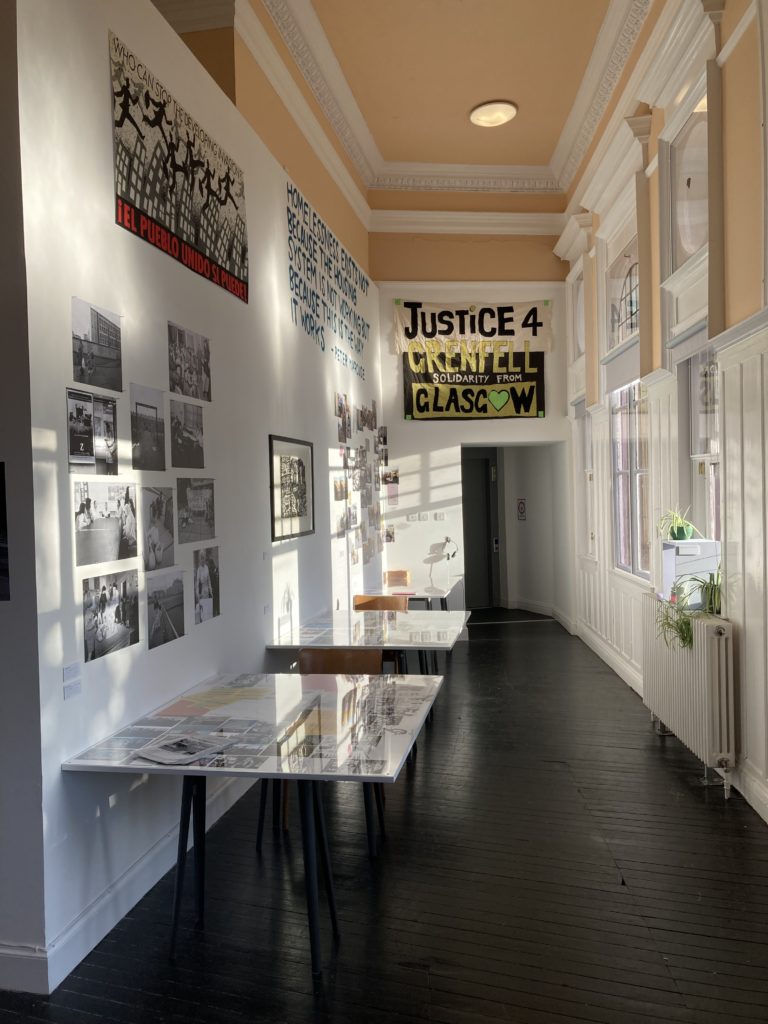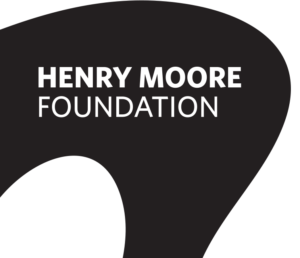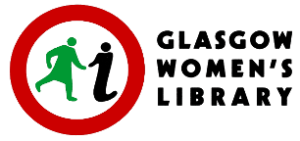In this post, Rachel Boyd and Weitian Liu, the curators of the Franki Raffles photographic display within the iteration of Marth Rosler’s installation If You Lived Here… (1989-present) as part of the Life Support exhibition, discuss the research that led to their selection of images from Raffles’s extensive photographic archive at the University of St Andrews Photographic Special Collections, and how Raffles’s images offer a perspective on the issues Rosler’s work explores from the perspective of 1980s and 1990s Scotland.
*
Between 1987 and 1988, the feminist documentary photographer Franki Raffles visited social housing estates across Scotland and produced a body of photographs about housing. Like most of her other photographs in the recently catalogued collection in the University of St Andrews Photographic Special Collections, this body of work exists largely in the format of negatives and contact sheets that are sometimes accompanied by handwritten notes indicating the subject of the photograph. Rather than a clearly defined photographic project, Raffles’ photographs on housing are part of the work she created between 1982 and the early 1990s as an Edinburgh-based freelance photographer. Working in collaboration with local authorities, women’s groups, and many other local organisations, Raffles’ photographs appeared in community centre exhibits, campaigns, and publications of various kinds.
At the same time, Raffles was photographing women workers for the project To Let You Understand... produced in collaboration with the Edinburgh District Council Women’s Committee. In the exhibition and pamphlet that followed, she combined her photographs with quotes from the women photographed and statistics designed to inform audiences about women’s working lives. The project included documentation of protests against the poll tax, and showed how labour and care were inextricably intertwined for many women workers.
Between 1992 and 1993, Raffles co-founded the Zero Tolerance campaign against domestic abuse, creating images which identified gender-based violence as a product of patriarchy, and directly challenged victim-blaming and associated misconceptions of ties between domestic abuse and social class – framed within the bounds of the living room.
Appearing elsewhere in the Life Support exhibition in the Welcome Wall display of archival materials, themes of care and support also converge in her photographs of NHS workers in Lothian, distributed to raise awareness about health, safety, and wellbeing among staff across the Lothian Health Board.
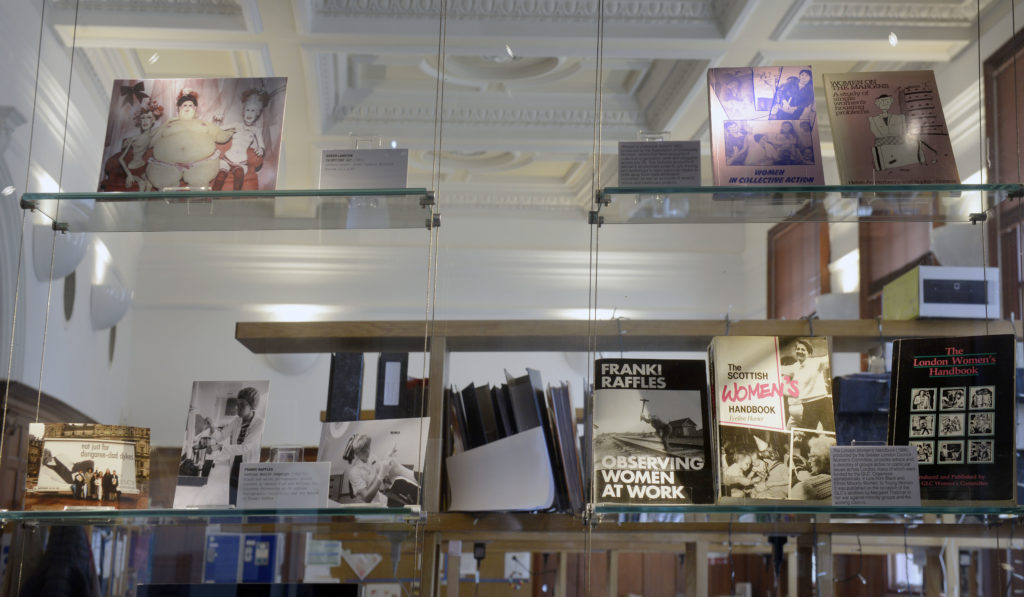
The distribution of Raffles’ photographs in public space enables an encounter between the viewer of the image and the everyday scene photographed. Her photographs of housing schemes in Edinburgh, Glasgow and Stirling align themselves with known points of encounter between tenants – among them, playgrounds, laundrettes, bus-stations and parks – which challenge conceptions of home beyond the binary of interior and exterior, sourcing community in the most liminal and pedestrian of spaces.
The photographs curated here as part of Life Support have been selected from the Franki Raffles Photography Collection, much of which encompasses unpublished works. It is important to note that these images have been curated from contact sheets. Raffles did not distribute these images as individual prints. Rather, these images were considered as ephemera, embedded in protest and policy; a process that involved collaboration and dialogue with the people and communities she sought to represent, and are notably different to the context in which they are exhibited today.
Working through an appropriate methodology in which to approach these photographs required sustained engagement with her archival holdings at Special Collections at St Andrews, and conversation with other partners including Living Rent: a tenant’s organisation whose members have lived experience of the issues Raffles documented. By upholding a dialogic and therefore person-centric approach to our subsequent selection of photographs, we were able to reflect on the kinds of language with which they should be presented to the public.
In the Life Support exhibition, Raffles’s images appear as part of an iteration of Martha Rosler’s If You Lived Here… (1989-ongoing) We were also made aware, as Martha Rosler has emphasised, that while many of the issues facing the provision of housing – poor sanitation, damp, a lack of public knowledge and appropriate support for tenants – were particularly timely to If You Lived Here, these were themes that also resonated in our contemporary society and experience of home life.
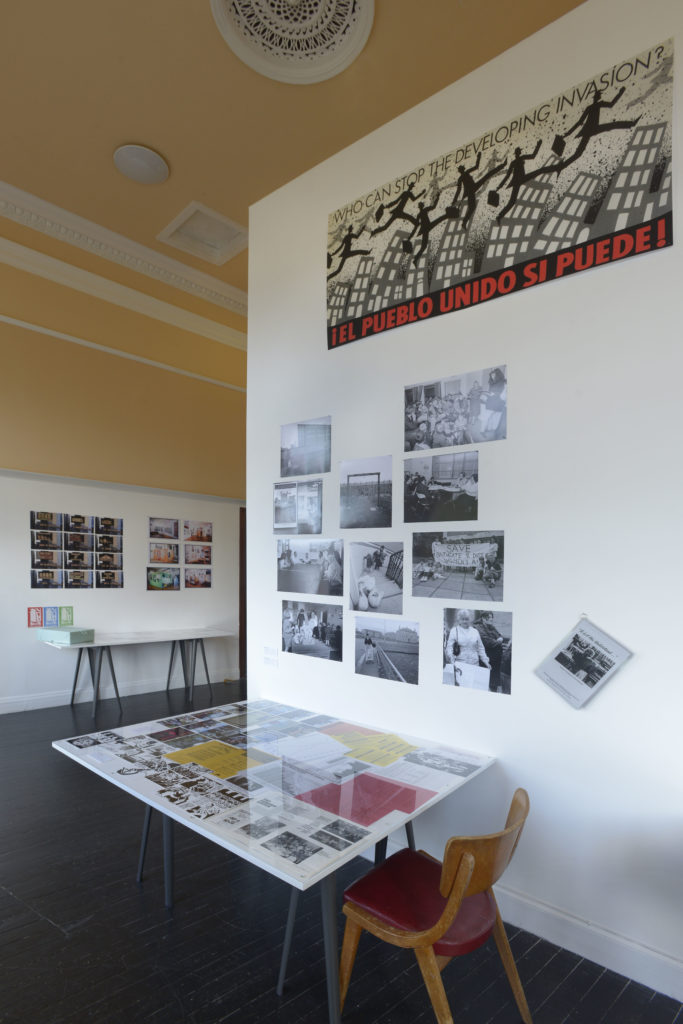
If You Lived Here centres the photographic archive as a space of agitation. Constructing an archive which represented tenant struggles was also a practice of making visible communities who were otherwise marginalized and obscured from view. In so doing, Rosler’s collaboration challenges associated ideas of homelessness as merely defining a community of who were most frequently seen – those begging on the street – rather proposing that the homeless lived among, and in common, with those already in homes. If You Lived Here… was a provocation which extended to people living in communal housing, or in the care of women’s shelters across America. Among them, the poorest in society were doubly impoverished by a distinct lack of good urban planning.
Curating the Franki Raffles archive was also about recovering what is hidden from sight. By presenting Raffles’ lesser-known folio of images of housing – pertaining to Scottish council estates in Glasgow, Edinburgh, Stirling and the Lothians – we hoped to uphold a dialogic practice: one that enables not only for the photographs to be seen, but for connections to be manifested, and for the local community to recognize something of themselves in what they represent. Dialogic practices – based on open channels of conversation and consultation in public space – are also intersubjective ones. Rosler’s work also predicates itself on these mutual and embodied practices, turning the lens on the lived experience of marginalized communities in New York.
One of the greatest challenges in curating Raffles’ photographs, beyond navigating physical access to archival resources during COVID-19, was in challenging the authoritarian discourse of curatorship; one which might have sought to situate Raffles’ photographs on housing within a greater history of poverty and social deprivation in Scotland. To adopt overtly academic language in framing these photographs would be to assume an authoritarian perspective on socio-political circumstances that we, as curators, were not exposed to; to neglect the empathy and person-centric approach which Raffles adopted in her practice – revealing the circumstances, the initiatives and the communities to whom housing activism belongs. These self-reflexive approaches, which involved engaging photography as an interface to facilitate dialogue, were often evoked in the naming of her projects, such as To Let you Understand, and We Can Take Pictures.
Conversation was at the forefront of Raffles’ approach. Furthermore, her photographs can be configured as discursive objects in and of themselves – something echoed in the integration of Rosler’s community work in advertising. Embedded in print media, billboards and related ephemera, the inclusion of Raffles’ photographs signified the greater visibility of marginalised groups, often women and children, by virtue of their direct intervention in public space.
Much like the work of her contemporary, Martha Rosler, Franki Raffles’ photographs are a document of collective action. Their presentation in Glasgow Women’s Library, as unframed prints retain the feeling of the photograph as a blueprint – echoing the proviso with which the materials in If You Lived Here… not only contributed to but consciously constructed the curatorial space as a leisurely one – offering shelter, thinking and reflection.
– Rachel Boyd and Weitian Liu
